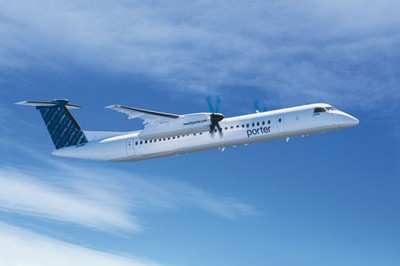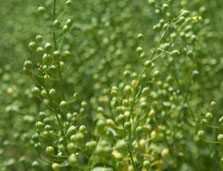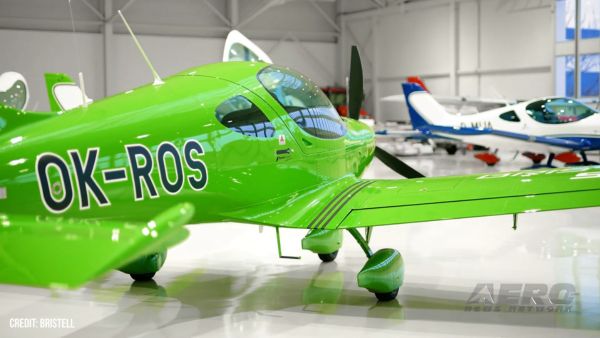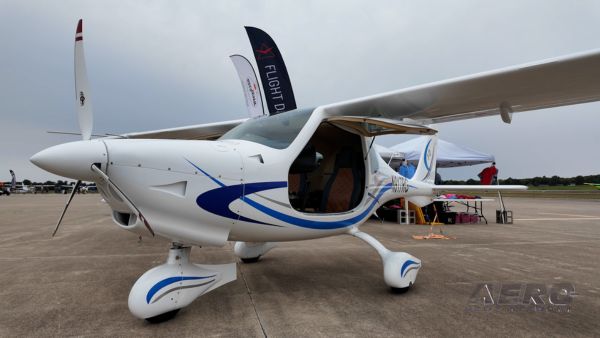Aircraft Operated By Porter Airlines
The search for an alternative to petroleum-based jet fuel
continues, and for the first time, a Bombardier Q400 aircraft will
be flown using fuel from an oilseed crop as part of a new biofuel
test program. A six-partner consortium, led by Saskatchewan-based
Targeted Growth Canada (TGC), expects to demonstrate the emerging
biofuel produced from camelina in a Porter Airlines Q400 turboprop
by early 2012.

Renewable fuel from camelina offers a real opportunity to reduce
the environmental impact of commercial aviation by significantly
reducing carbon lifecycle emissions. The Bombardier Q400 aircraft
is equipped with standard Pratt & Whitney Canada PW150A
engines. Sustainable Oils, LLC and Honeywell’s UOP will
participate in the camelina biofuel test program on the Q400
aircraft along with TGC, Bombardier Aerospace, Porter Airlines Inc.
and Pratt & Whitney Canada. TGC will work on crop optimization
and growth, Sustainable Oils will pre-refine the camelina oil and
Honeywell’s UOP will produce the hydro-treated renewable jet
(HRJ) biofuel from the oils provided.
Funding for the project is being provided by the partners as
well as by Sustainable Development Technology Canada (SDTC), an
arms-length, not-for-profit corporation created by the Government
of Canada and Green Aviation Research & Development Network
(GARDN). "It's important for Canadian companies to take leadership
roles in developing the next generation of environmentally-friendly
business applications," said Robert Deluce, president and Chief
Executive Officer of Porter Airlines. "Porter and our consortium
partners recognize this, and are encouraged with the progress we're
making on biofuel for aircraft." “The Q400 aircraft is
already one of the greenest regional aircraft in service around the
world, and this test program provides Bombardier and the partners
an opportunity to further the industry’s biofuel efforts and
ultimately help reach its emissions reduction targets,” said
Helene V. Gagnon, Vice President, Public Affairs, Communications
and Corporate Social Responsibility, Bombardier Aerospace.
“There’s no doubt that biotechnology will play a key
role in developing long-term, sustainable and low-carbon fuel
sources,” said Tom Todaro, President, TGC. “But we
can’t do it alone. The close collaboration with the other key
players in the value chain, including Bombardier Aerospace, Porter
Airlines Inc. and Pratt & Whitney Canada, along with funding
from SDTC and GARDN will help us accelerate the commercial
availability and use of next generation biofuels.”

Camelina Plant
"We have implemented new technologies to significantly reduce
fuel consumption, environmental emissions and engine noise in our
latest generation of engines and we are developing cutting-edge
green technologies for the future," said Walter Di Bartolomeo, Vice
President, Engineering, Pratt & Whitney Canada. "We are
committed to testing alternative fuels, including second and
third-generation biofuels, in an effort to reduce the
environmental impact of our products."
“The aviation industry is coming under increased pressure
to reduce its environmental footprint, and clean technologies will
be key in achieving that goal,” said Dr. Vicky Sharpe, SDTC
President and CEO. “Funding at the development and
demonstration stages is crucial for technologies like the one
Targeted Growth Canada and its partners are working on to reach the
market sooner, making them available to the industry.”
“Biofuel is a key driver to achieve carbon-neutral growth and
the introduction of low-carbon alternative fuels is of critical
importance to the future growth of Canadian industry. GARDN has
identified projects in biofuels as an important research theme that
requires investment from both industry and government,” said
Claude Lajeunesse, Chairman of the Board of GARDN.
“The Government of Canada is committed to supporting clean
energy technology through Sustainable Development Technology
Canada,” said the Honourable Tony Clement, Minister of
Industry. ”We will continue to work together with industry to
reduce greenhouse gas emissions and build a more sustainable
environment through investments in green infrastructure, energy
efficiency, clean energy technologies and the production of cleaner
energy and cleaner fuels.”

Recognized for its potential as a biofuel and bio-lubricant,
camelina is a member of the flowering plant family Brassicaceae,
which also includes well-known species such as cabbage and
cauliflower. The program objective is to optimize production and
establish performance standards for refined camelina oil as a
drop-in replacement for jet fuel that fits with the current
refining and distribution infrastructure and with existing
engines.
The process takes farmer-produced grain through crushing to a
pre-refined vegetable oil. This crude camelina oil is then refined
into HRJ. Camelina HRJ provides benefits over traditional petroleum
fuel because it reduces greenhouse gas emissions by up to 80 per
cent, reduces sulphur dioxide (SO2) and is not competitive with
food production because it can be grown in rotation with wheat and
on marginal land. The strategic benefit to farmers is that it
allows them to drive additional revenue from acreage with a
low-cost input crop with two end user markets – the oil for
fuel and “meal” for livestock and dairy industries.
 Aero-News: Quote of the Day (09.12.25)
Aero-News: Quote of the Day (09.12.25) First-ever Jetson ONE eVTOL Delivery Goes to Oculus Founder
First-ever Jetson ONE eVTOL Delivery Goes to Oculus Founder Hawaiian Airlines, Honolulu CC Start Mx Tech Program
Hawaiian Airlines, Honolulu CC Start Mx Tech Program Bristell Receives First FAA Part 23 Certification for its B23 Trainer
Bristell Receives First FAA Part 23 Certification for its B23 Trainer Blue Alchemist Successfully Completes Critical Design Review
Blue Alchemist Successfully Completes Critical Design Review





